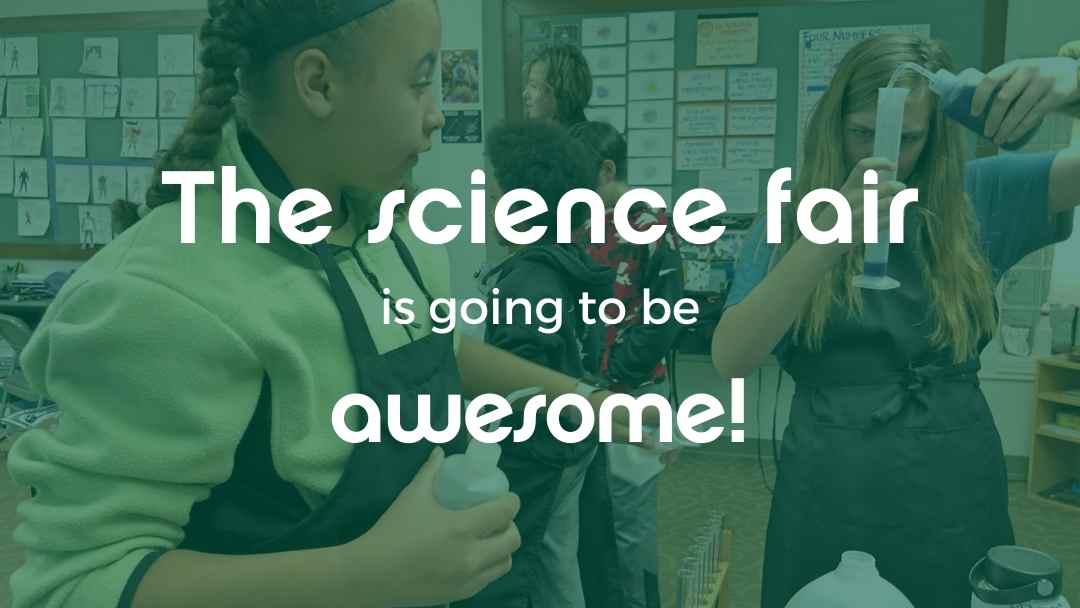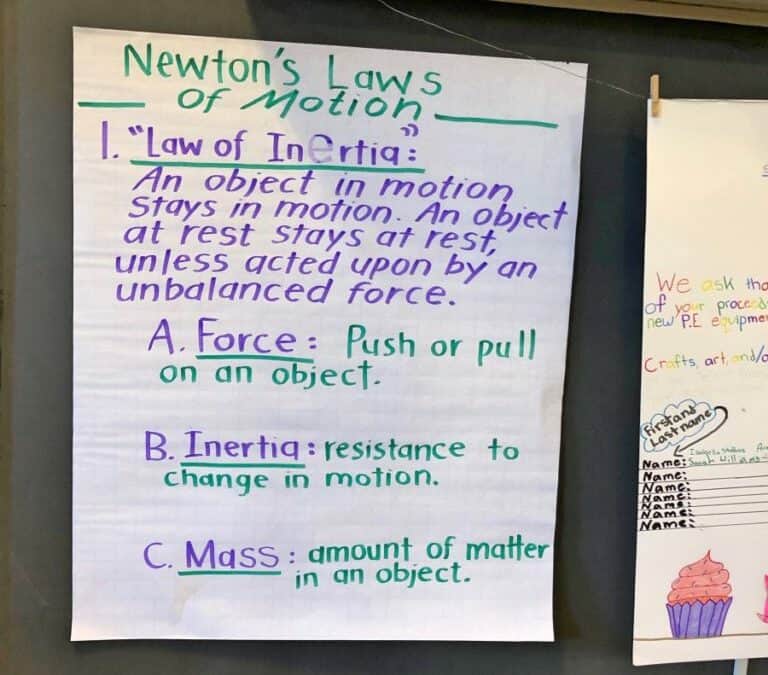
by Cynthia Calhoun | Oct 30, 2019 | Blogs, Home Page News
Learning about the Rock Cycle
First graders have been studying the rock cycle, and they’re learning it through the seven domains: the mental domain, creative, and natural, among others.
The story of Piedra
Have you heard of Piedra? She’s the main character in the story their teacher, Rachel, told. Students gathered around while they heard the tale of Piedra, whose journey spanned MILLIONS of years.
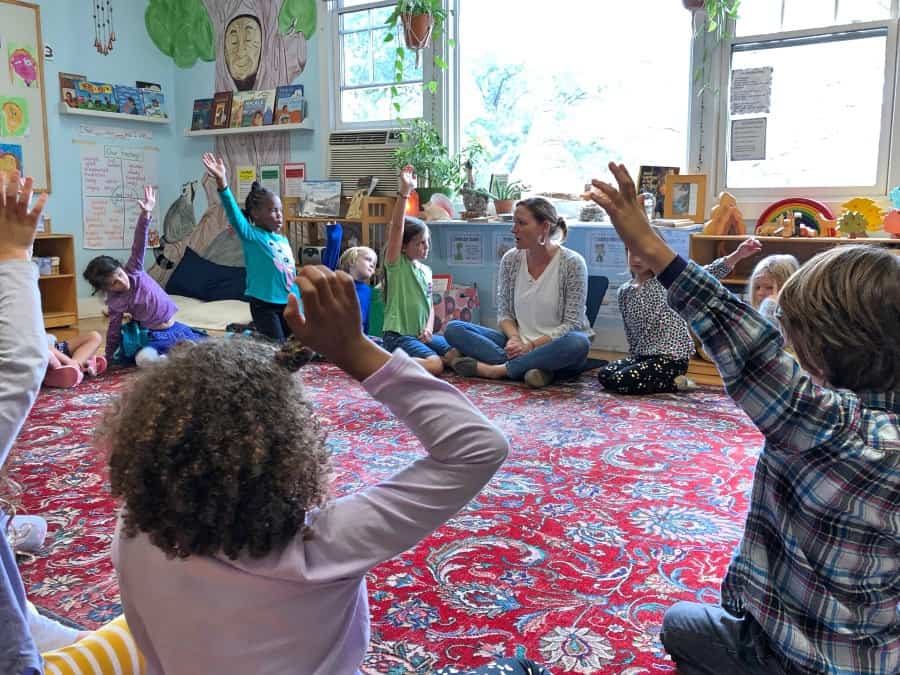
Rachel told of how Piedra lived in Appalachia, then made her way to a nearby river where she stayed for hundreds of thousands of years. Over the course of that time, she witnessed turtles, ducks and river otters going about their lives. Little by little, Piedra rolled and rolled downriver, eventually finding herself out at sea. Piedra saw sea animals that she’d never seen before swimming all around her.
Millions of years in the making…
Gradually sand and silt from the sea bottom began to cover her up until she was completely buried, taking about 20,000 years to happen. Piedra stayed there for another million years until she felt a warmth coming from the earth. She felt a whoosh and before she knew what happened, she erupted through a volcano as hot lava, and immediately cooled once she hit the air. She emerged once again as a rock upon a mountain. Only this time, she was a rock who had changed.
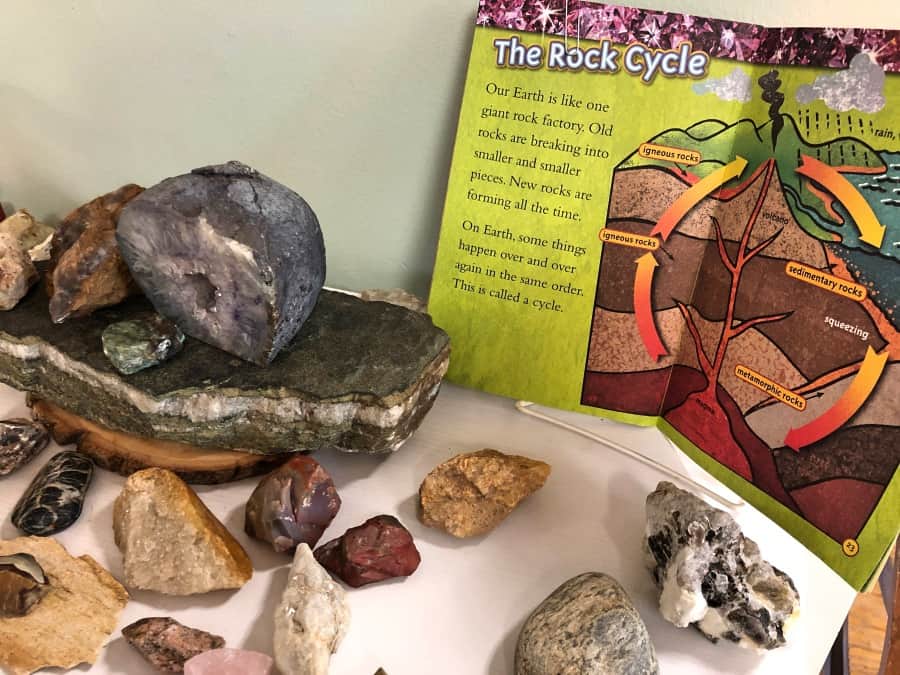
Through this compelling story, students learned about how a rock might go through the entire rock cycle. They talked about other cycles they might be familiar with: the lava cycle, the water cycle, and the butterfly cycle.
Illustrating the Rock Cycle
After students heard the story, they had an opportunity to create an illustration of the rock cycle. Miss Rachel led them through a guided drawing.
They began with a line.
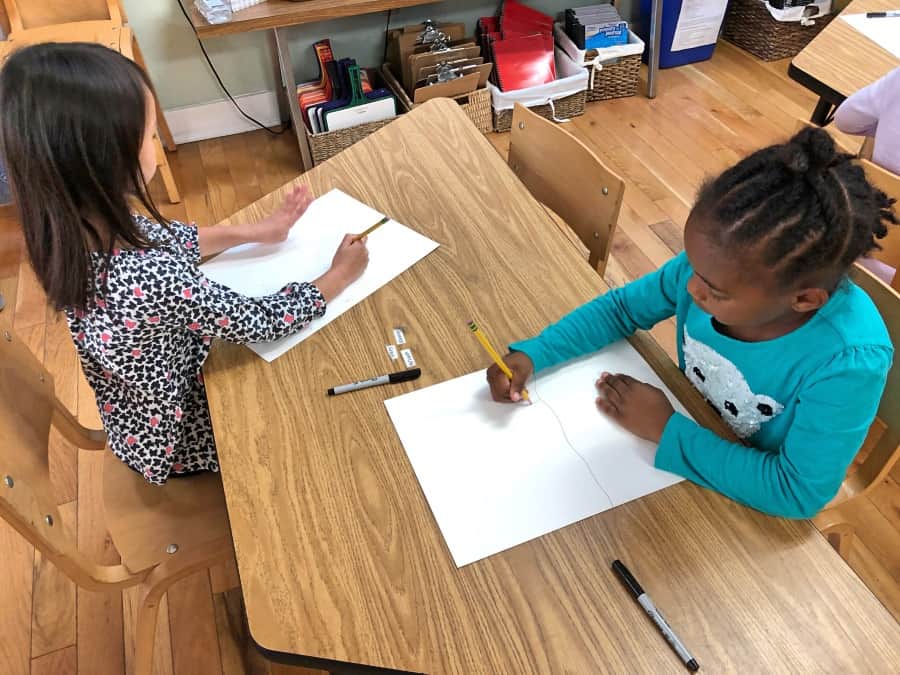
Followed by a volcano.
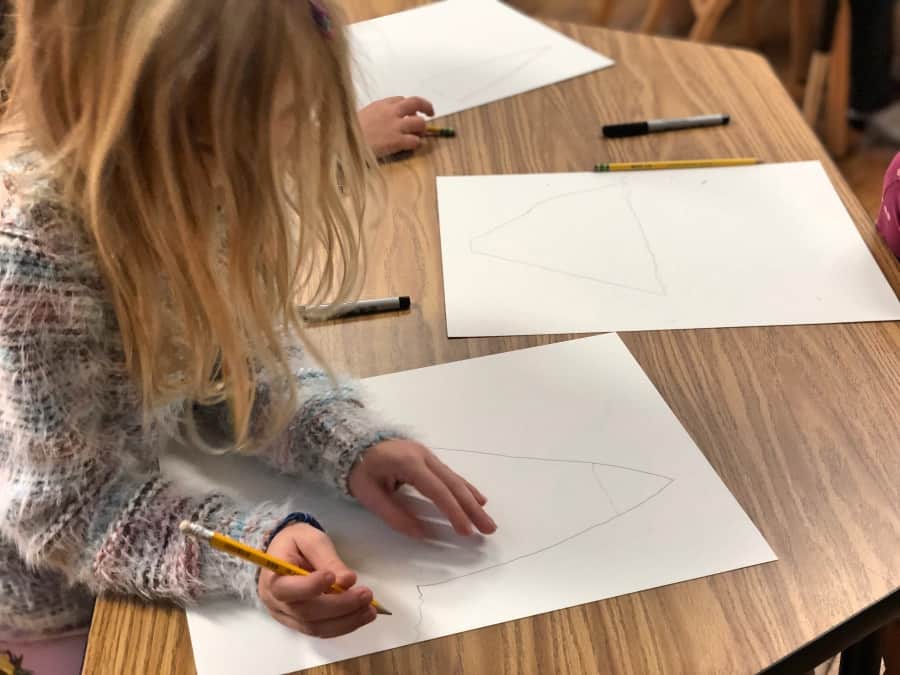
Next they erased the left part of the line and replaced it with a wavy ocean line.
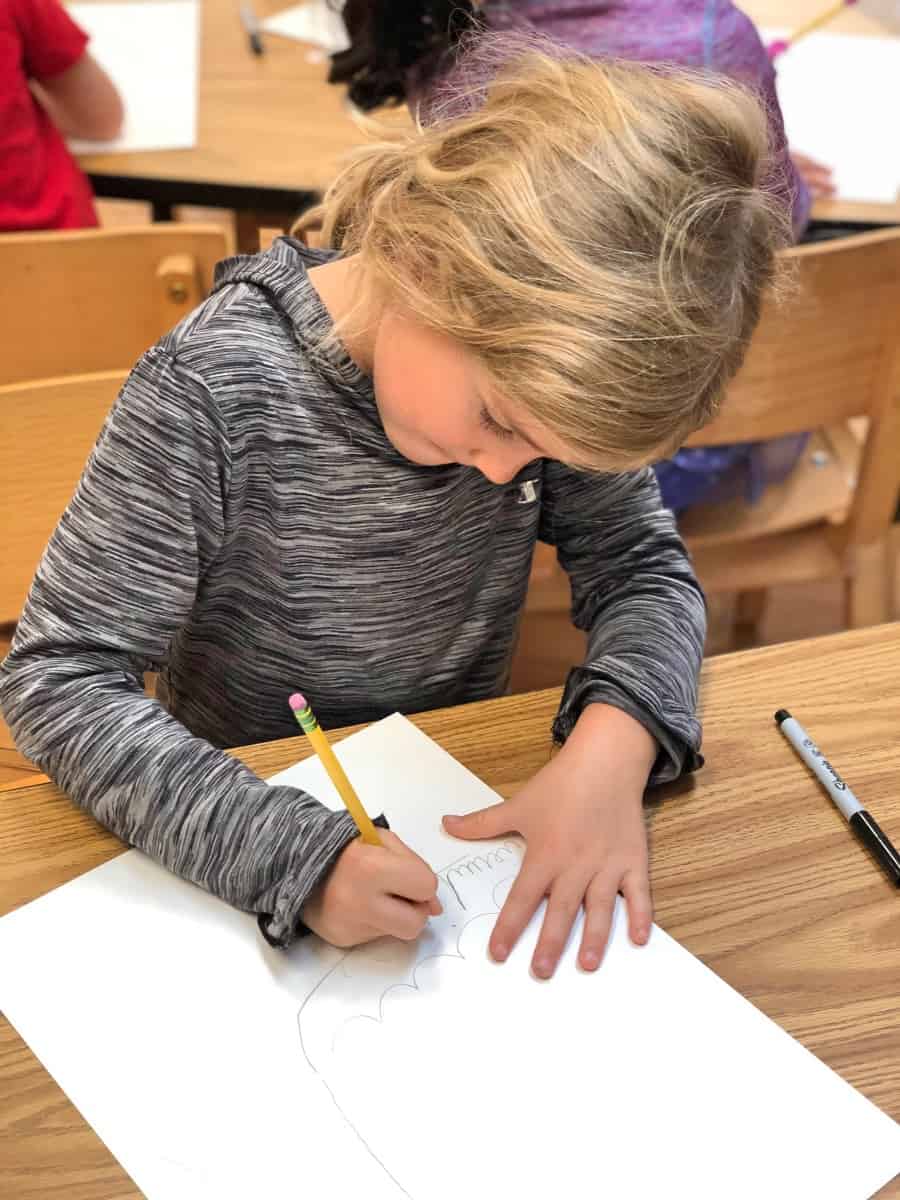
They followed that with a “lava ball”…
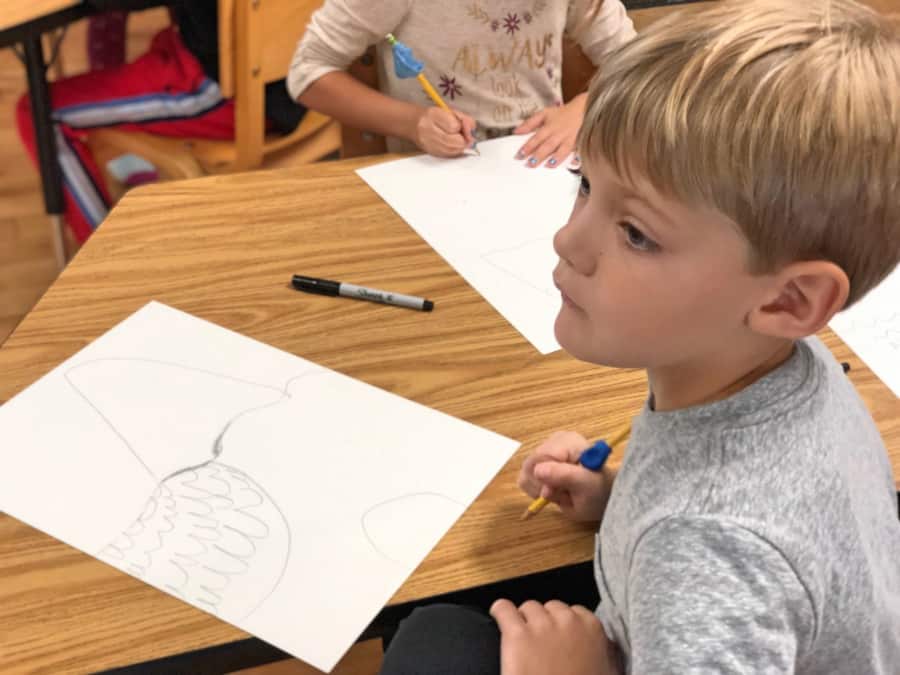
…that grew into a lava chute.
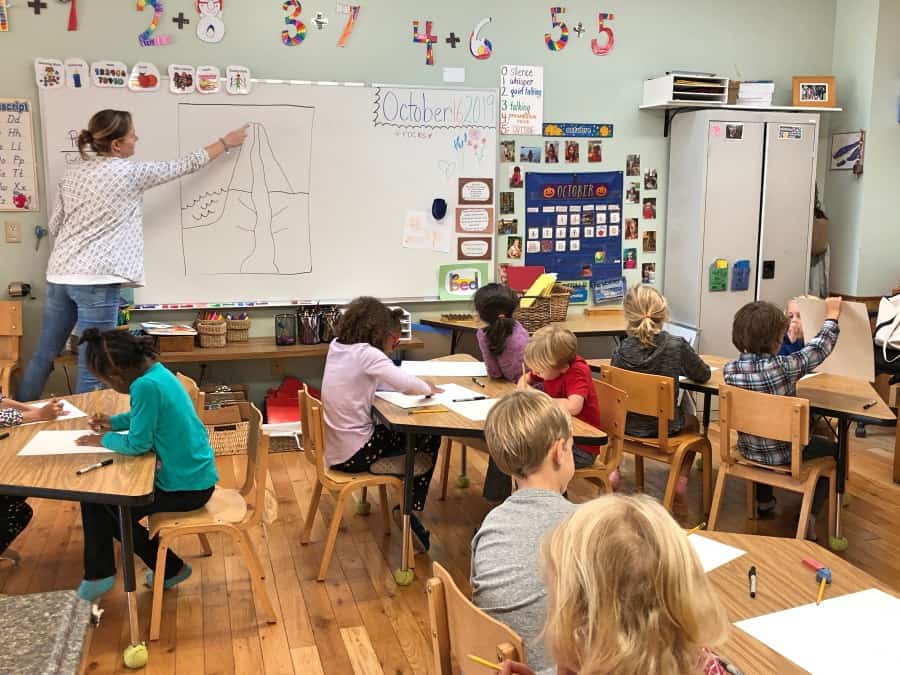
They erased the top of the volcano to allow the lava to exit the earth, and had some fun drawing globs of lava “splashing out and spilling over the side”.
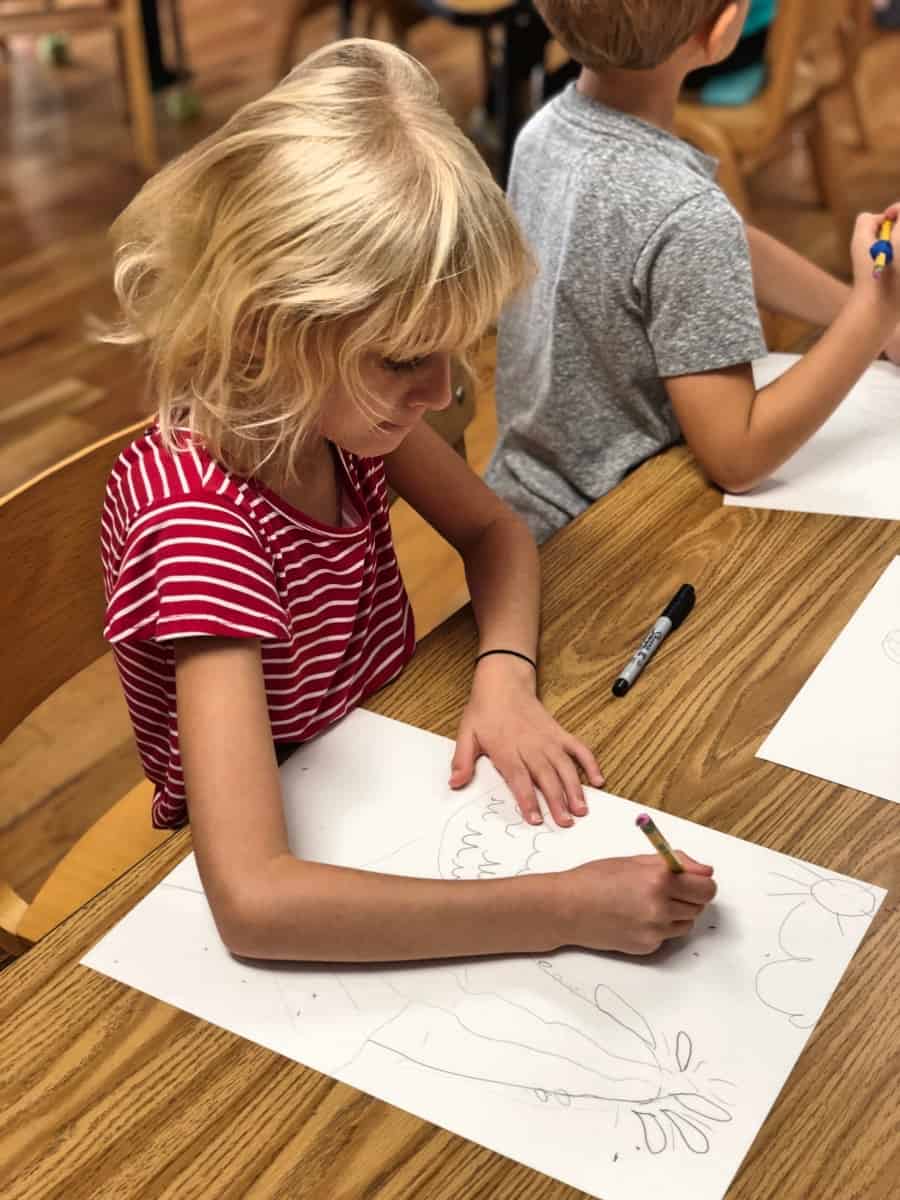
Next came creative layers that represented millions of years of creation.
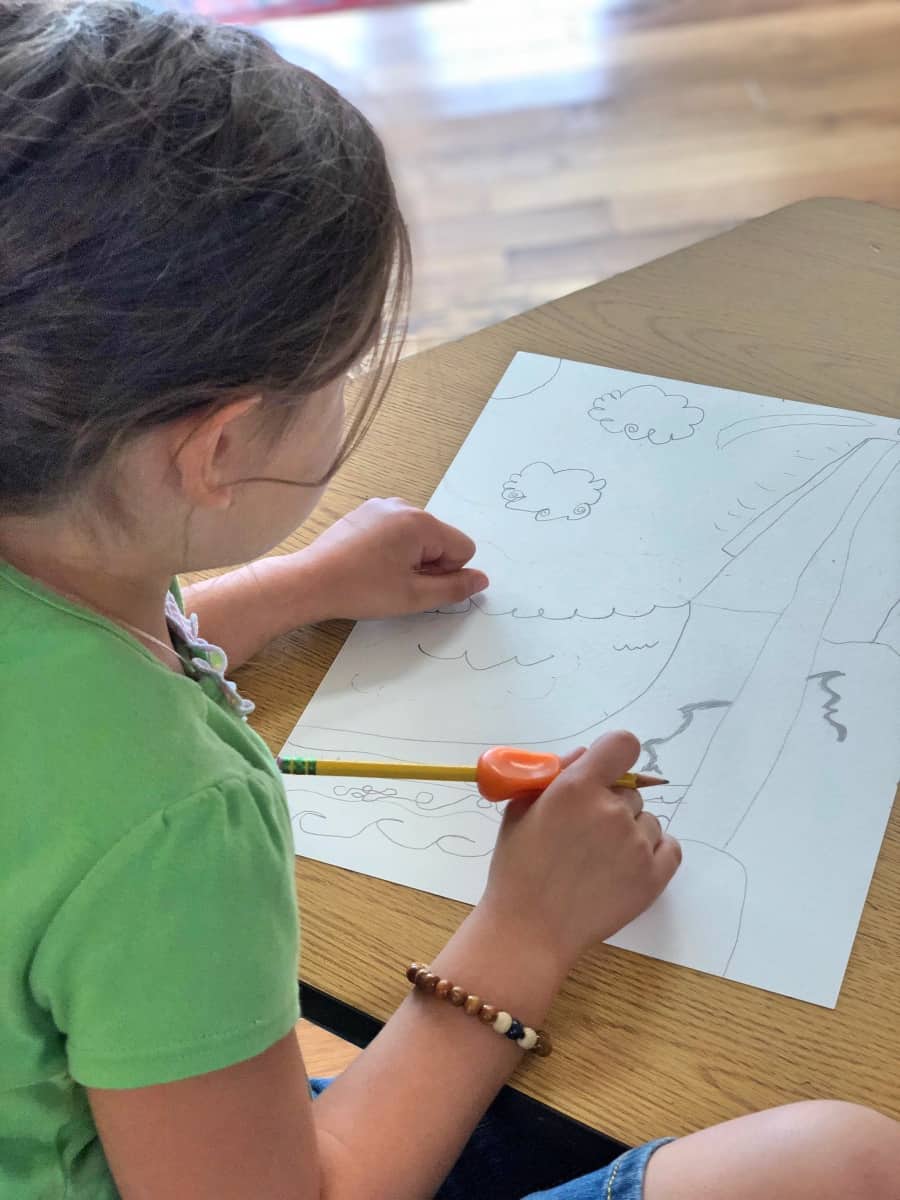
The final steps were to go over their pencil lines in marker…
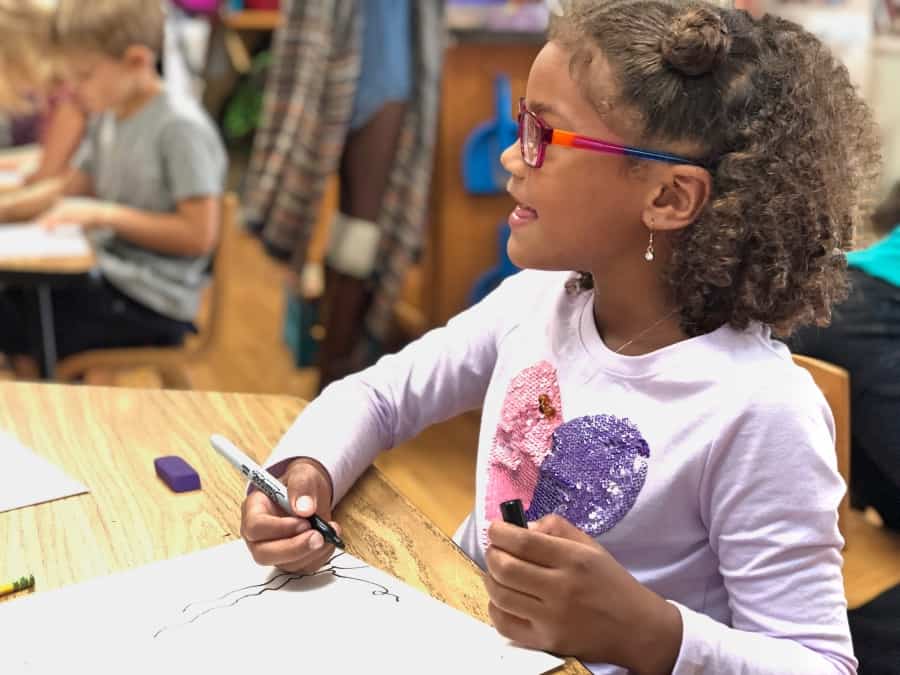
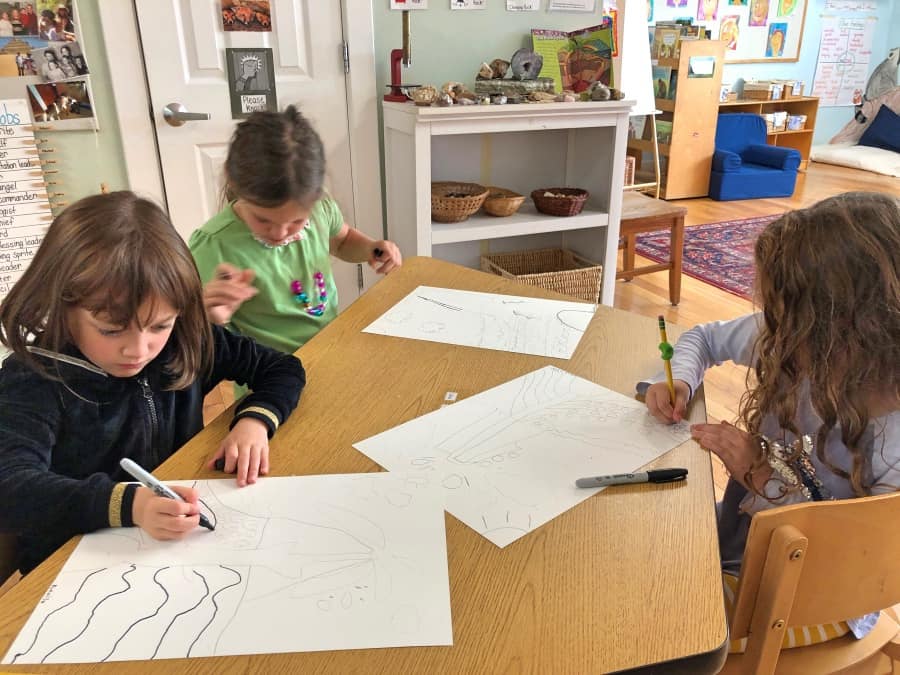
…and fill in their drawings with watercolors.
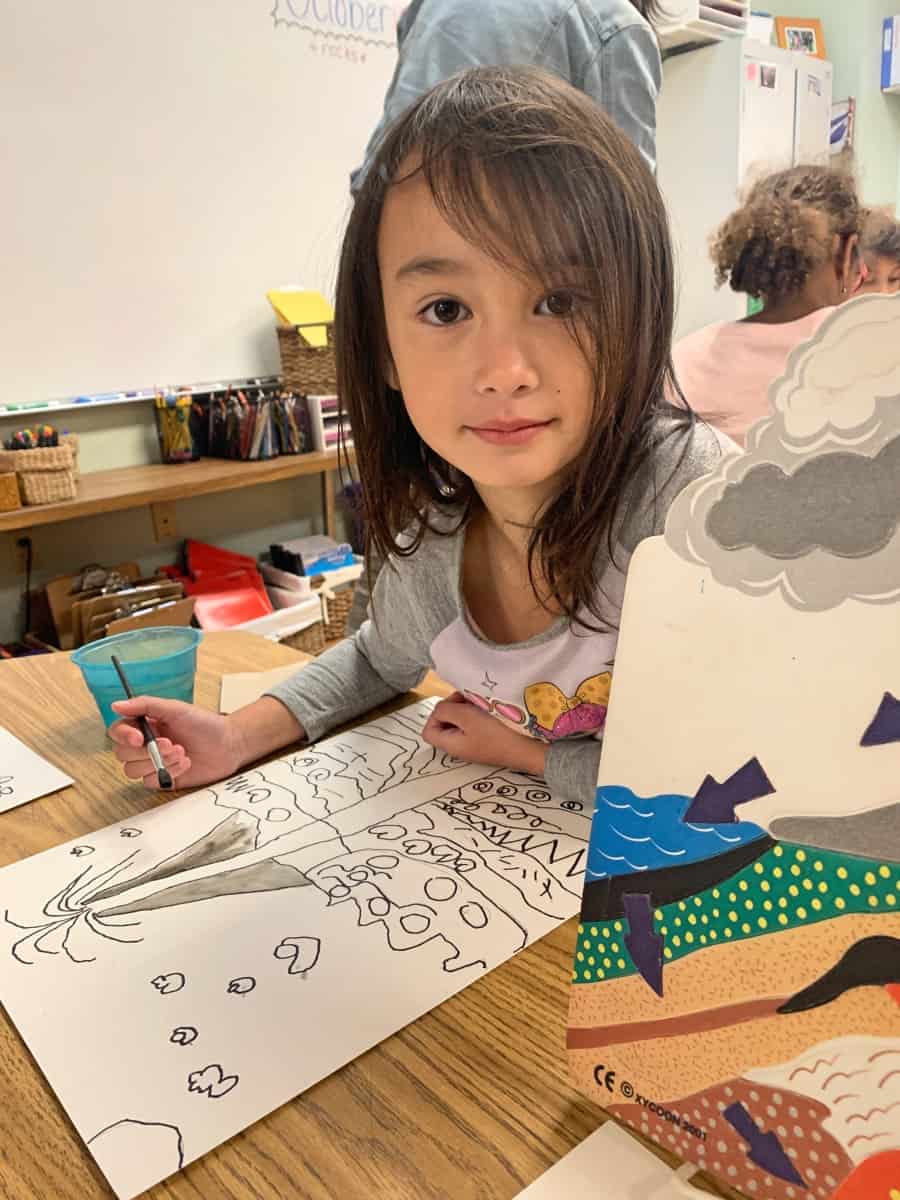
Our first graders now can tell you all about the rock cycle, starting with a tiny little rock on the side of a mountain.
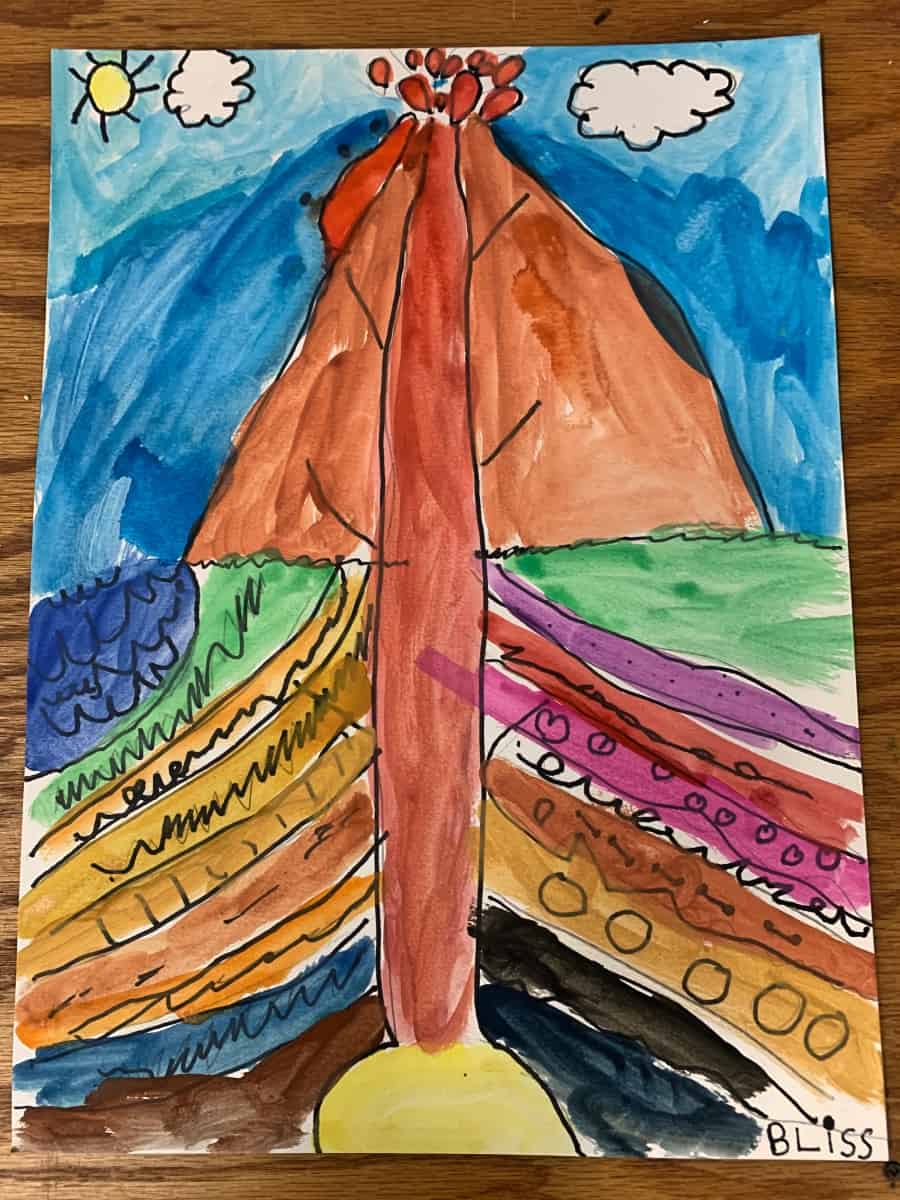
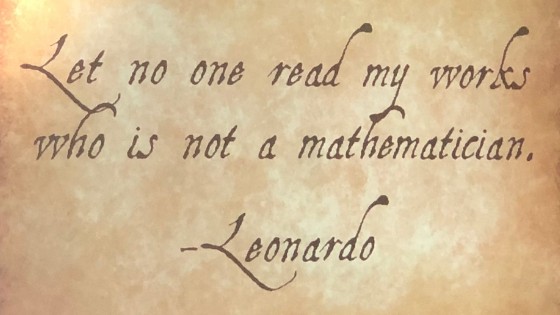
by Cynthia Calhoun | Oct 25, 2018 | News
So many things…all in a day’s work
Sacred geometry, science experiments, and literacy – all in a day’s work. Maybe not even a day’s work, but in the span of an hour and a half, students experienced some incredible learning.
Language Arts
It was mid-morning, and students were well-immersed in their classes.
Teachers create units that complement each other. Today’s activity included vocabulary words that would come up in science class later in the morning. Students were likely not familiar with them.

Susan, their teacher, had them study the list of words for two minutes. We love that some kiddos wanted to know why they needed to study and memorize them. Susan had them “sit tight” because they would find out in a few minutes.
At the end of the two minutes, students turned their papers over and had one minute to write down the words they remembered. Afterward, some folks remembered 2, 3, or 5 words, and one student had 15!
Learning strategies
Some students had words from an “A” list, or from a “B” list. The words on each list had different characteristics. Some words were bold, some were in alphabetical order, and more.
Students discussed their strategies for memorization. One student said he memorized words in groups. Another said she put a description with each word. Others mentioned eliminating words that were too long, repeating different words over and over, and some tried writing them down.

Learning objective
The idea here was that It’s important to try different learning strategies. By doing so, students can figure out what works best for them, and what doesn’t. By sharing ideas, everyone could learn a strategy that maybe they hadn’t tried previously.
Learning games
Next came cutouts of the vocabulary words. Students split into groups of 3 (with 8 vocabulary words each) or 4 (with 6 vocabulary words each) to collaborate and separate their vocabulary into categories. They were allowed to discuss and work together to do so. Susan instructed them not to worry about words they didn’t know, but to work together to see if someone else knew the meaning. If not, they could use deductive reasoning to separate them out.
What a way to learn vocabulary. Students had some fun and challenging approaches to learning new words. They will then relate them back to their science learning, as well as tie their different classes together to touch on the different domains. The lessons on this day emphasized the mental and creative domains.
Art History
Across the hall, another Omega class studied art history and math. It wasn’t just another garden-variety middle school class, however. Their teacher, Mark, was incorporating elements of sacred geometry.
Sacred geometry is an area of intense interest for Mark. In fact, he’s publishing a book on the subject soon.
While in his class, students studied Renaissance paintings and works by Da Vinci, Michelangelo, Verocchio, and others.

Da Vinci and math
While listening to Mark’s lecture, students were quite riveted with the presentation. Mark mentioned how Da Vinci was a great artist, AND used mathematics heavily in his work.
Incredibly, perspective and sacred geometry came into play. The proportions of the human body, for example, represent universal sacred geometry parameters. Da Vinci’s paintings include so much symbolism as well as “hidden” geometry, especially in his human subjects.
For example, one might be able to find evidence of the sacred spiral or even phi ratios in different Da Vinci paintings.

Students had a chance to try their hand at creating their own works of sacred geometry. They used a compass and ruler and made their own golden rectangles, along with sacred spirals.
They also saw examples of how those patterns show in up nature on the most minute scale (such as with tiny seashells) all the way up to a universal scale, such as with spiral galaxies.

The “Eggs-periment”
Back in the science classroom, the Omega group that had become vocabulary masters began delving into their new science unit.
They began an investigation involving the standard egg. They chose to either do an “egg-speriment” or “what about other eggs” for their research.
The eggs-periment involved observing changes in an egg and recording those observations. The latter assignment gave students the opportunity to study an egg-laying creature to investigate.
Both projects required entries into student science journals, presentations, making models, and writing effective science reports.

Omegans have a rich curriculum
All these interesting subjects, all by the noontime hour! We can only imagine what happened after lunch. All in a day’s work.

by Michael Valentino | Mar 24, 2016 | Blogs, News


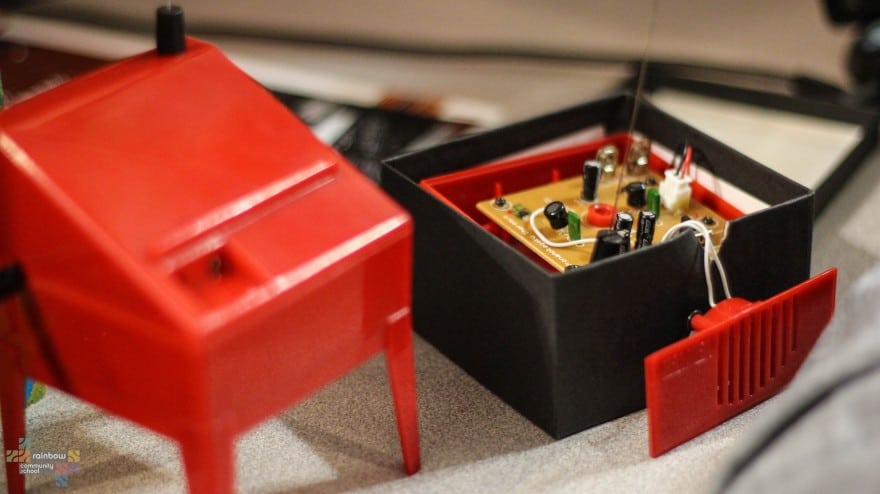 I love, love, love the design projects that you chose! You all “went big” – nobody played it safe and picked something easy. And here you go, making change in the world. This is why teenagers rule. – Niki Gilbert
I love, love, love the design projects that you chose! You all “went big” – nobody played it safe and picked something easy. And here you go, making change in the world. This is why teenagers rule. – Niki Gilbert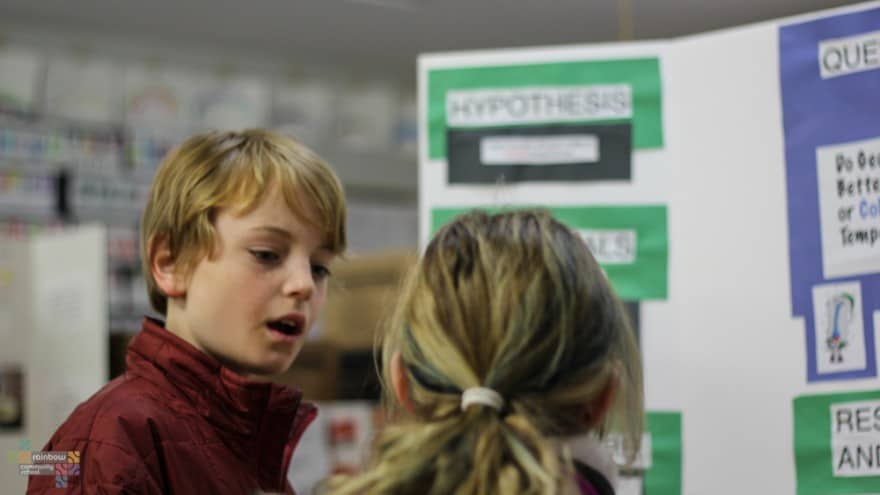
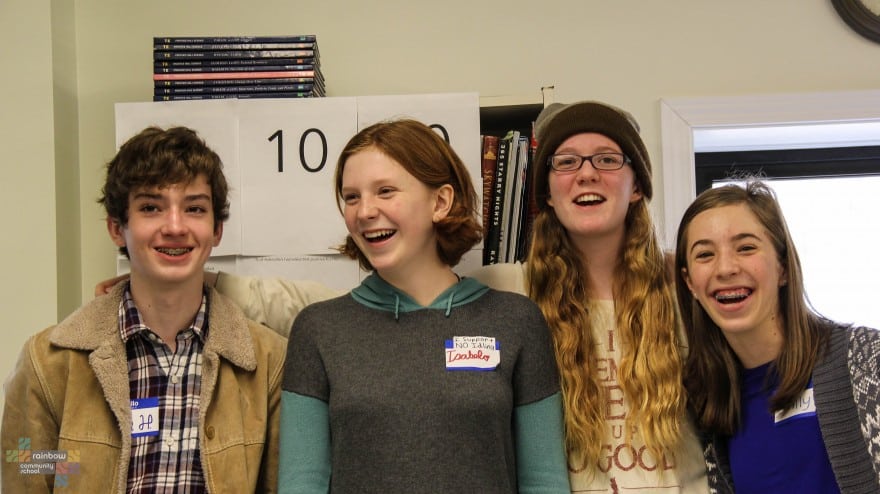
 The students’ innovative ideas to create change within the school and greater community were so inspiring! I can’t wait to see the continued impact they will make in the community! – Sandra McCassim
The students’ innovative ideas to create change within the school and greater community were so inspiring! I can’t wait to see the continued impact they will make in the community! – Sandra McCassim
 I liked how each of the students had a voice. The process that was used required research, work and much thought. They taught us, the parents, and I loved it! – Dianne Caldwell
I liked how each of the students had a voice. The process that was used required research, work and much thought. They taught us, the parents, and I loved it! – Dianne Caldwell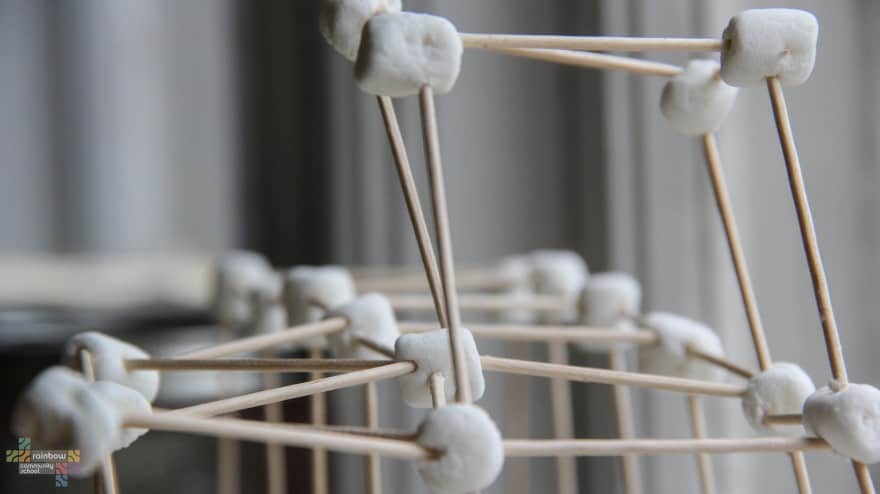
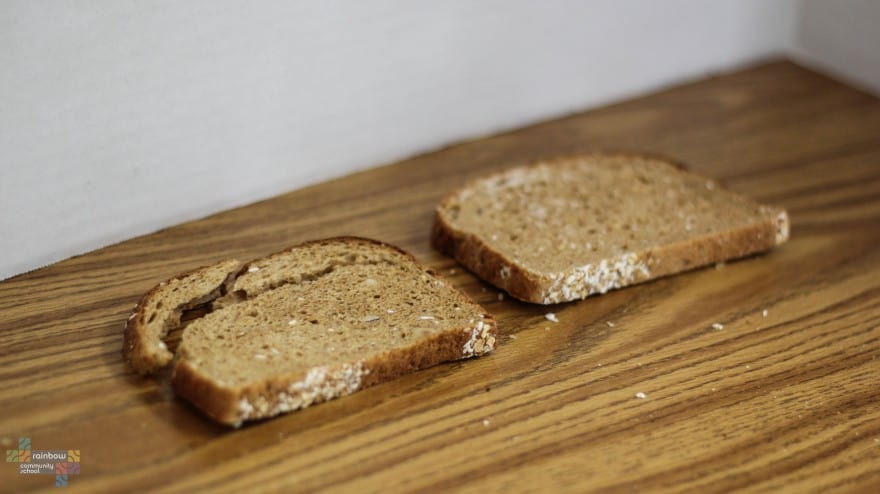
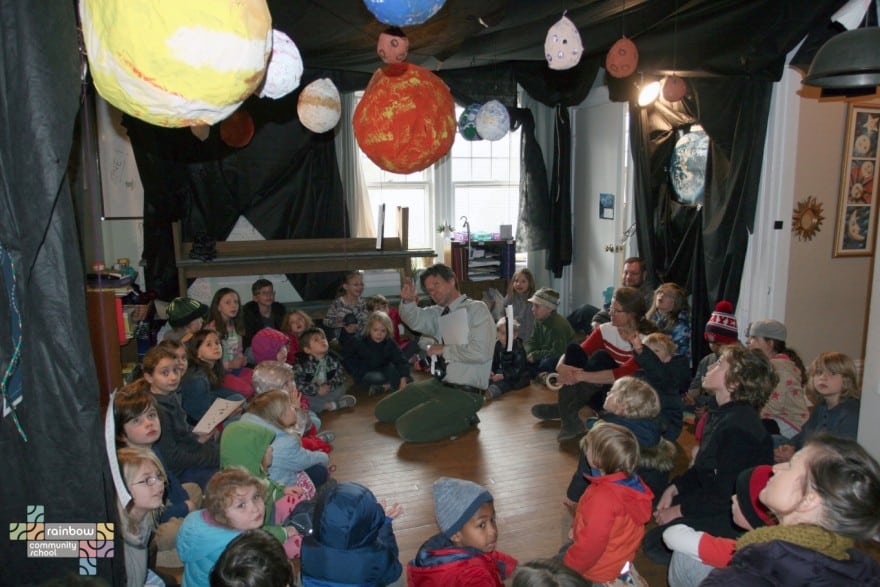 The creativity was amazing. It was so inspiring to see Omegans dive in and work hard! You all will be the change that we want to see in this world!! – Ali Banchiere
The creativity was amazing. It was so inspiring to see Omegans dive in and work hard! You all will be the change that we want to see in this world!! – Ali Banchiere 
 I was struck by the breadth of issues students had identified; from concerns within our Rainbow community, like bathroom beautification and parking lot safety, to global problems, like global warming, and many in between. – Tracy Hildebrand
I was struck by the breadth of issues students had identified; from concerns within our Rainbow community, like bathroom beautification and parking lot safety, to global problems, like global warming, and many in between. – Tracy Hildebrand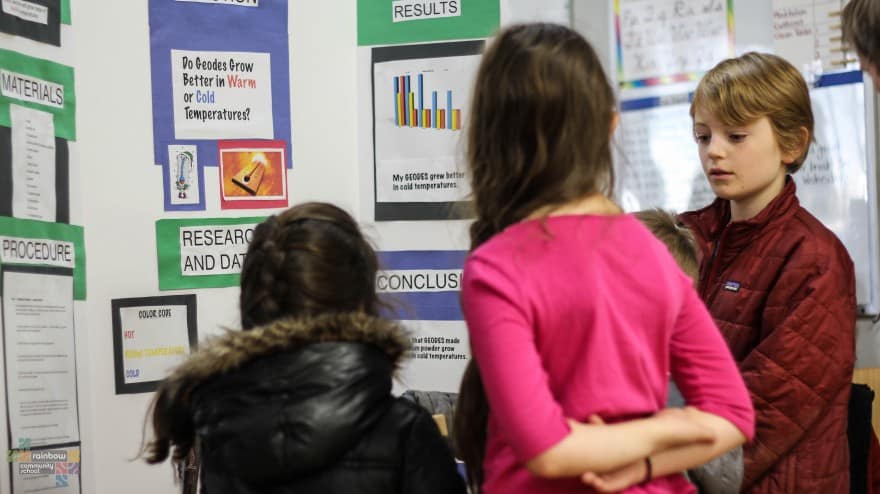
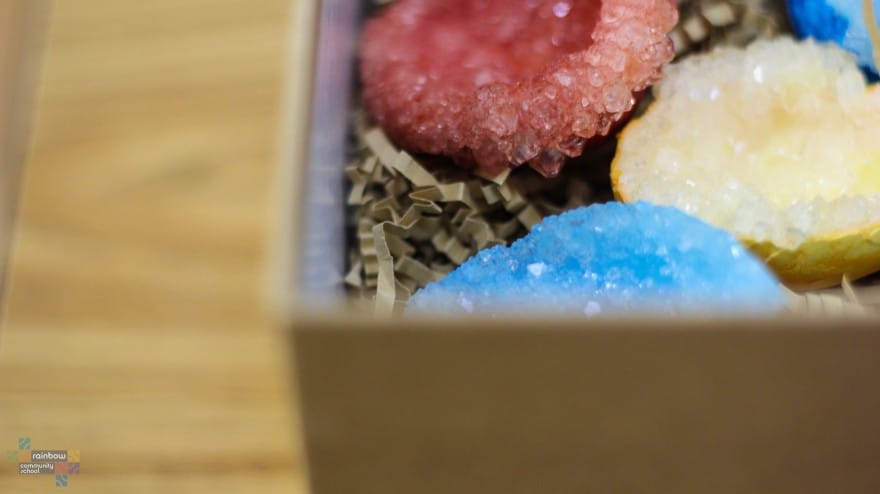
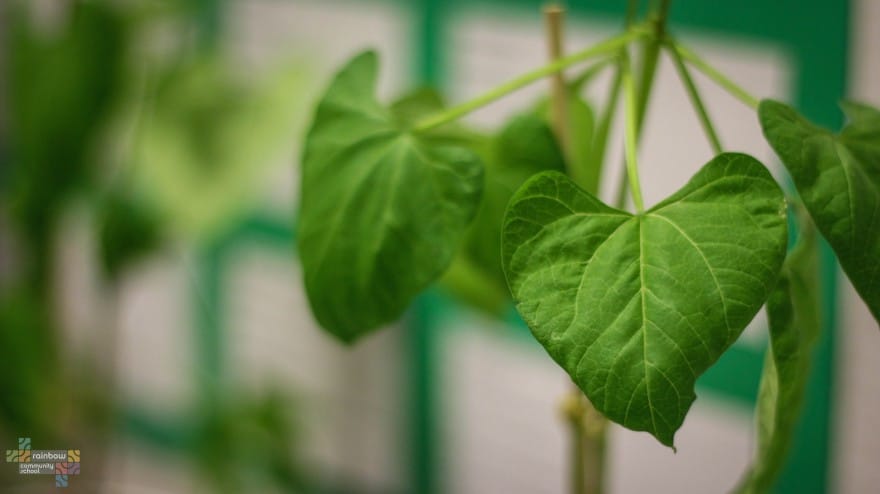 In our work we are constantly having to come up with creative solutions to the challenges we face. After observing how the kids used the Design Process to facilitate out-of-the-box ideas, we plan to incorporate this structure into our brainstorming sessions at work. Way to go kiddos! Go out and change the world… it needs you! – Molly Irani
In our work we are constantly having to come up with creative solutions to the challenges we face. After observing how the kids used the Design Process to facilitate out-of-the-box ideas, we plan to incorporate this structure into our brainstorming sessions at work. Way to go kiddos! Go out and change the world… it needs you! – Molly Irani
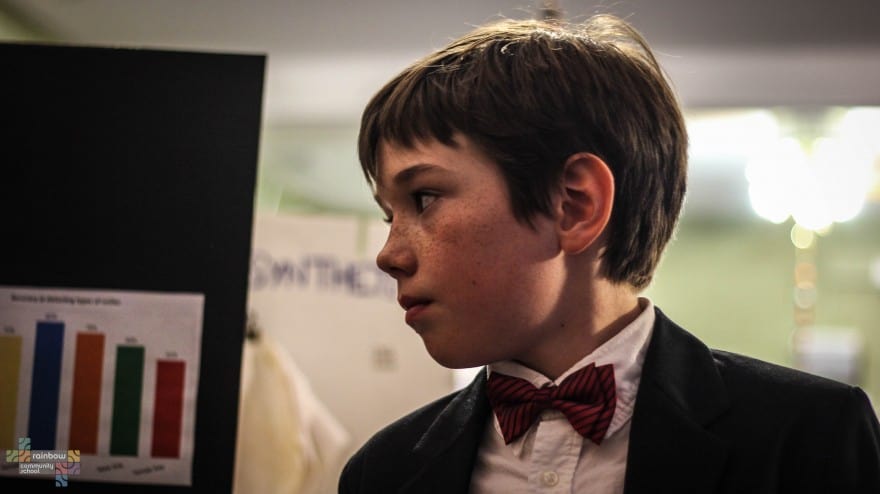
 I felt that due to the feedback the students collected throughout their process from classmates and parents, their inventions and ideas were realistic and useful. They were professional and proud in their presentations. – Jen Lauzon
I felt that due to the feedback the students collected throughout their process from classmates and parents, their inventions and ideas were realistic and useful. They were professional and proud in their presentations. – Jen Lauzon
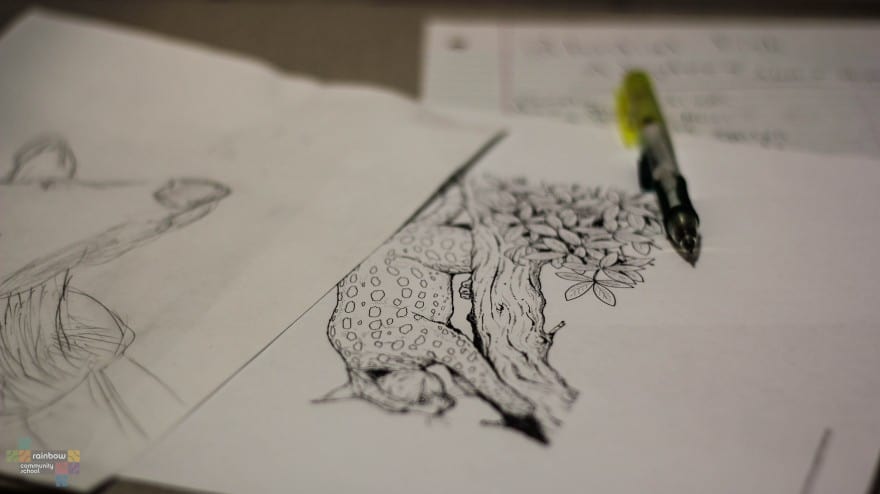
 I enjoyed learning a little more about each Omegan; what interests you, what moves you to act on your feelings, interests, and passions, and how you explain your process and share with others. I was inspired by your creativity and innovations. I am hopeful for our future with young people like you doing great things in the world. – Caryn Hanna
I enjoyed learning a little more about each Omegan; what interests you, what moves you to act on your feelings, interests, and passions, and how you explain your process and share with others. I was inspired by your creativity and innovations. I am hopeful for our future with young people like you doing great things in the world. – Caryn Hanna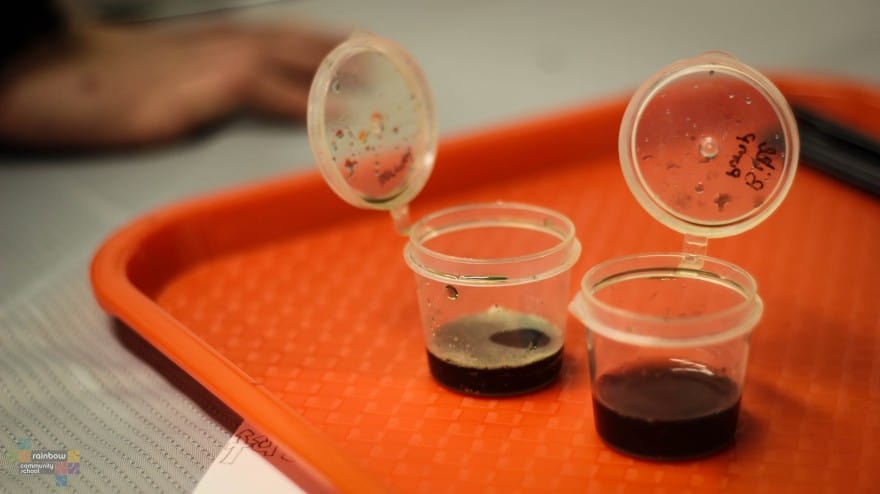
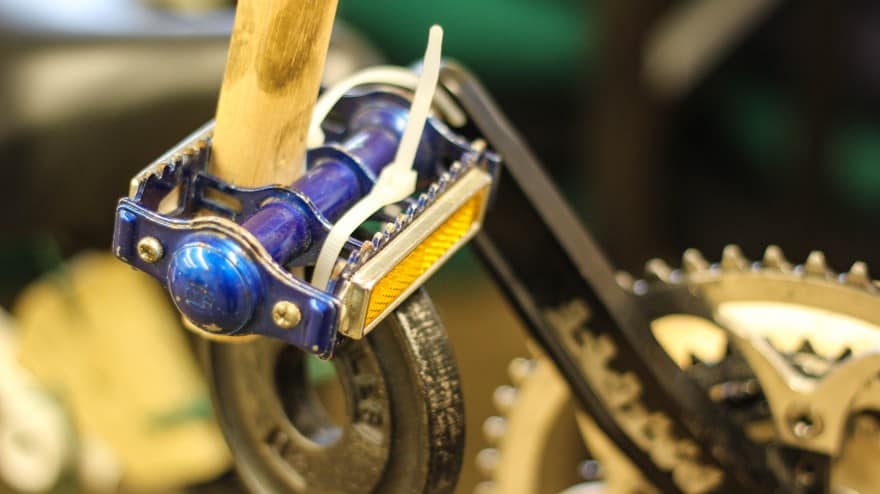
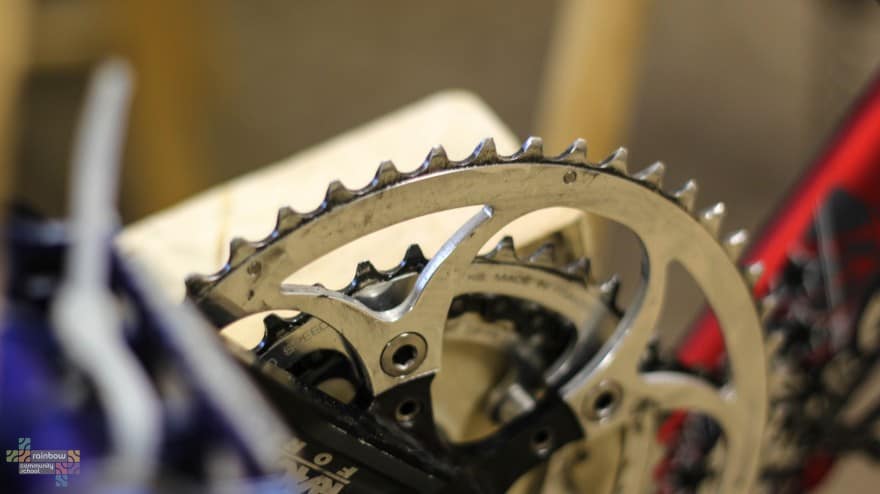 Projects like yours do not always work out perfectly. Just like the Wright Brothers making designs, we work on some things, they fail, and we change them. I loved how you were clear and honest about both what did work and about things that didn’t work or might need to be changed. This shows that real learning – and inventing – was happening! – Chris Weaver
Projects like yours do not always work out perfectly. Just like the Wright Brothers making designs, we work on some things, they fail, and we change them. I loved how you were clear and honest about both what did work and about things that didn’t work or might need to be changed. This shows that real learning – and inventing – was happening! – Chris Weaver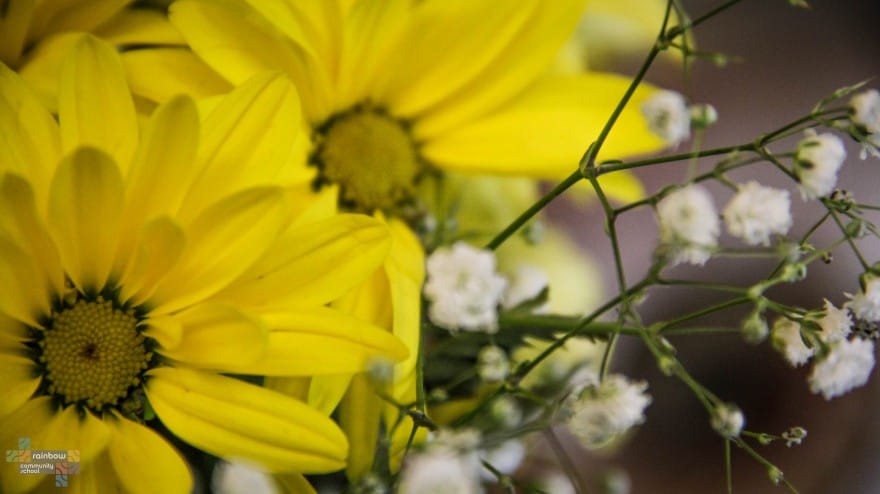
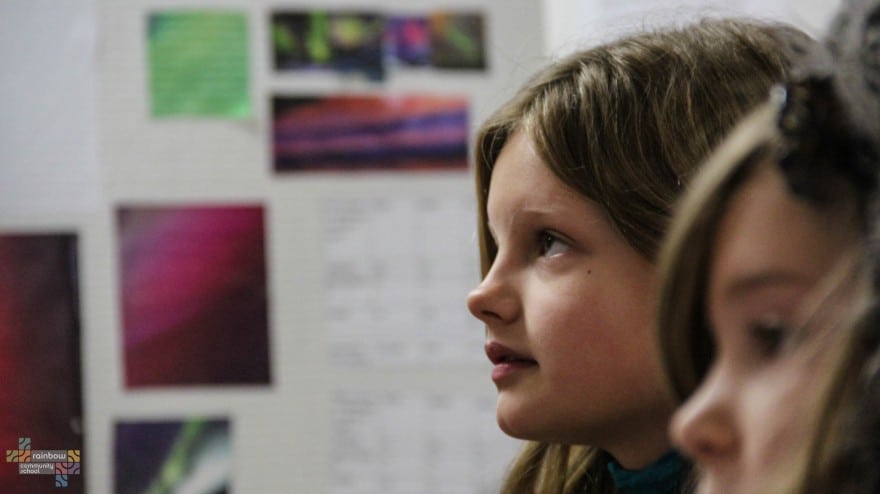 Skills learned in the Design Fair will serve a for a lifetime. – Stewart Stokes
Skills learned in the Design Fair will serve a for a lifetime. – Stewart Stokes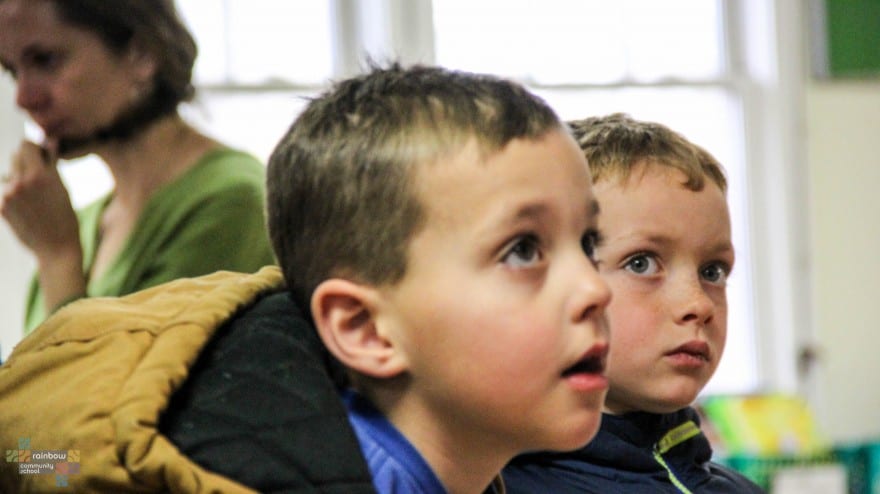
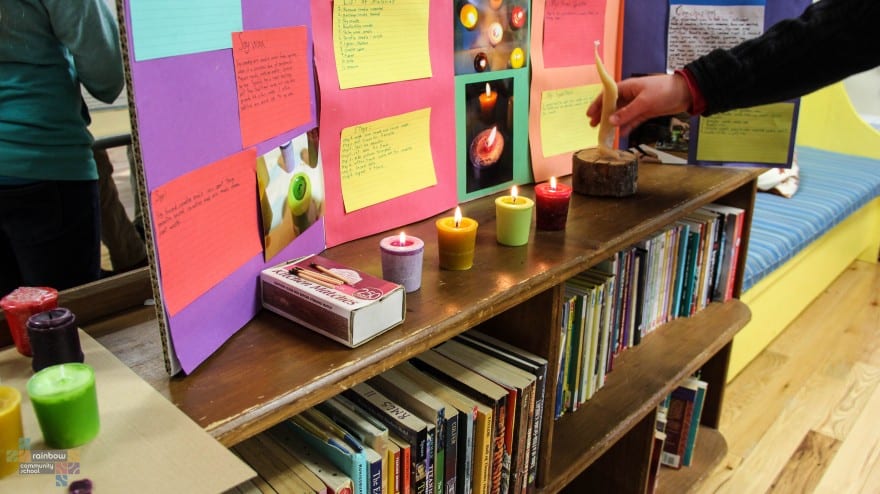
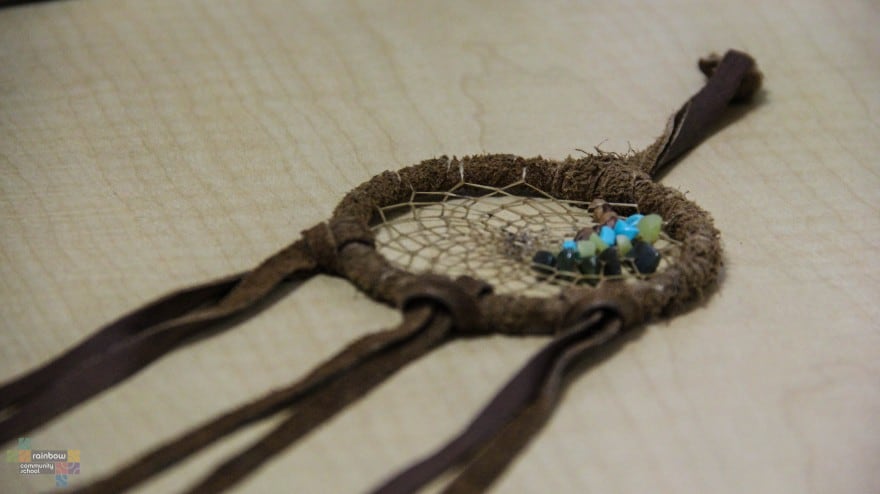 I loved how enthusiastic the kids were about their topics as well as how well they presented them. Having them think in this way is really critical as citizens of this planet! Thank you kids! – Jennifer Lazinsk
I loved how enthusiastic the kids were about their topics as well as how well they presented them. Having them think in this way is really critical as citizens of this planet! Thank you kids! – Jennifer Lazinsk 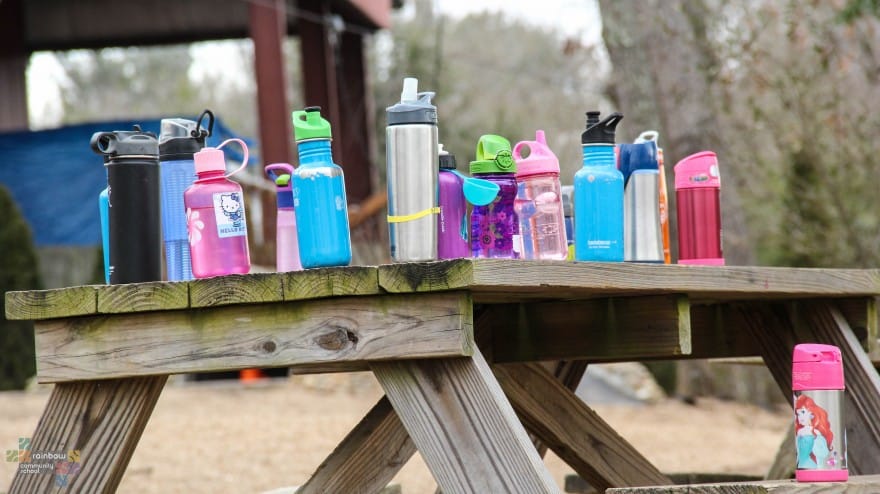
 Several of the presentations gave examples of how each of us could change our daily behavior to improve our environment and here at home we have already changed several things. Others made me more aware of social issues that had not occurred to me and presented doable solutions. I have been to many adult presentations on various issues and the difference was unbelievable. The energy and enthusiasm as well as the wealth of information was inspiring. – Sherry Hill
Several of the presentations gave examples of how each of us could change our daily behavior to improve our environment and here at home we have already changed several things. Others made me more aware of social issues that had not occurred to me and presented doable solutions. I have been to many adult presentations on various issues and the difference was unbelievable. The energy and enthusiasm as well as the wealth of information was inspiring. – Sherry Hill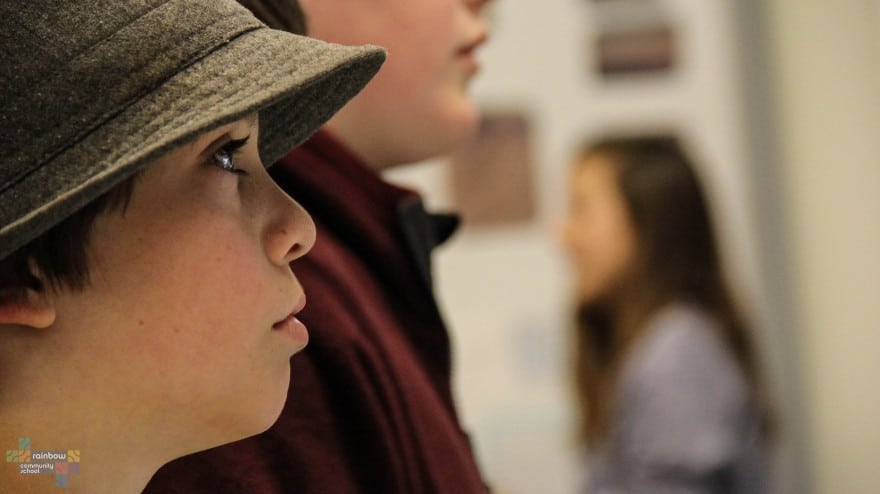
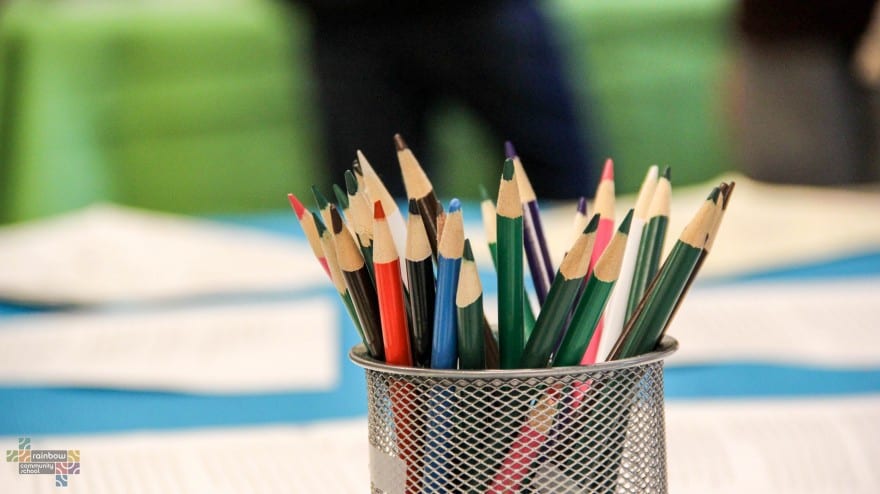 I was totally blown away by the composure, confidence and maturity displayed by the Omegans at the design fair… At each stop I felt engaged, informed and inspired. It was very moving to see these young changemakers in action. I have no doubt these young people are on their way to being adults who move through life truly “walking the walk” not just talking the talk. – Rachel Hagen
I was totally blown away by the composure, confidence and maturity displayed by the Omegans at the design fair… At each stop I felt engaged, informed and inspired. It was very moving to see these young changemakers in action. I have no doubt these young people are on their way to being adults who move through life truly “walking the walk” not just talking the talk. – Rachel Hagen
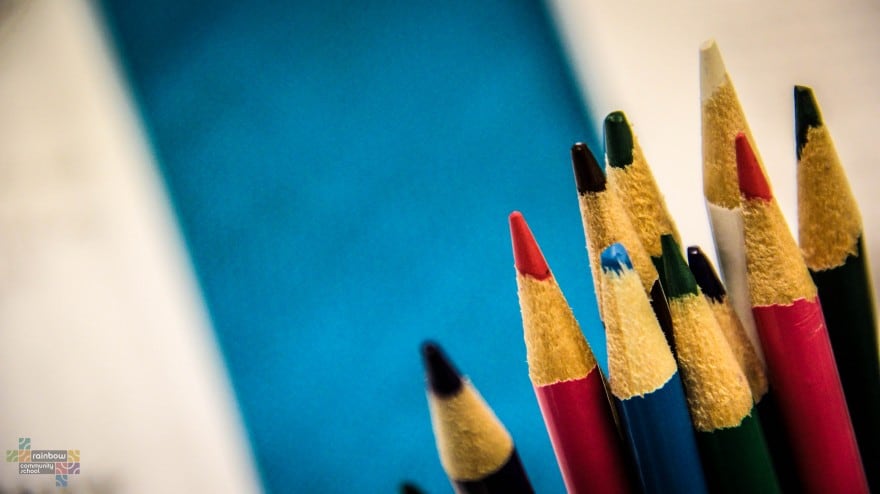
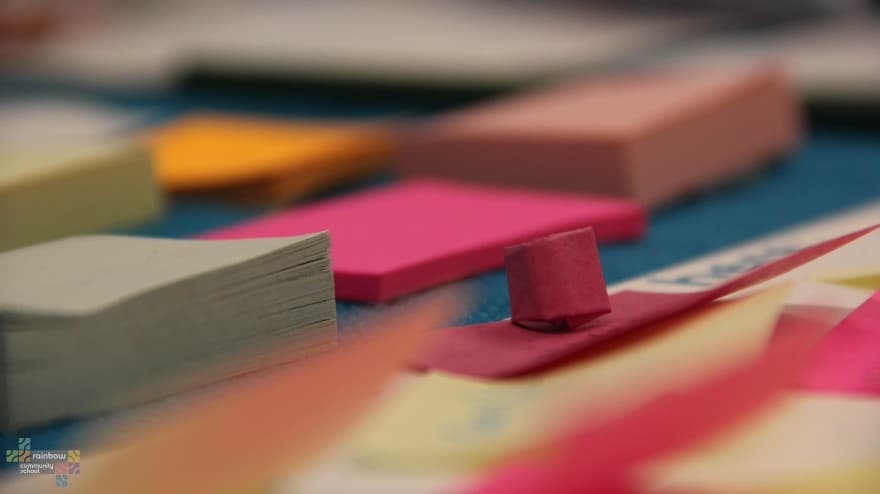 I was so inspired and impressed to see the variety of conundrums being tackled in such innovative ways for the design projects. The sixth graders were also very impressed, and are already talking excitedly about what they’d like to do for their own design projects. – Jenny Armocida
I was so inspired and impressed to see the variety of conundrums being tackled in such innovative ways for the design projects. The sixth graders were also very impressed, and are already talking excitedly about what they’d like to do for their own design projects. – Jenny Armocida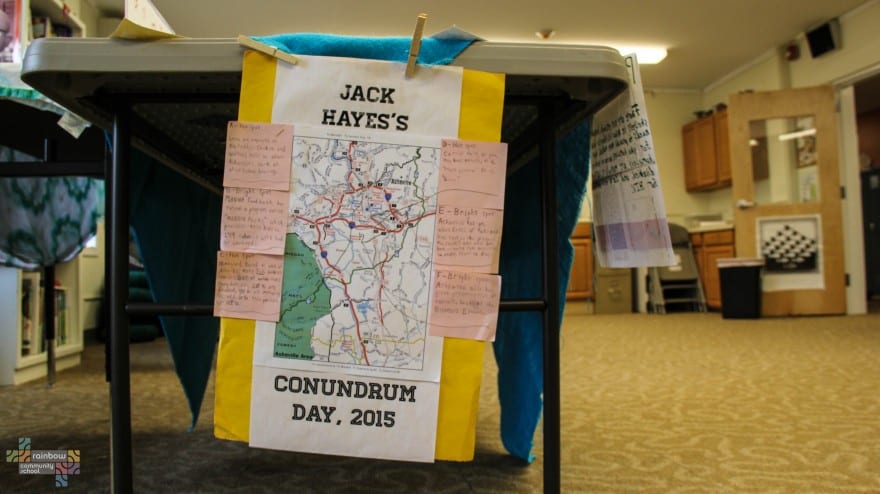
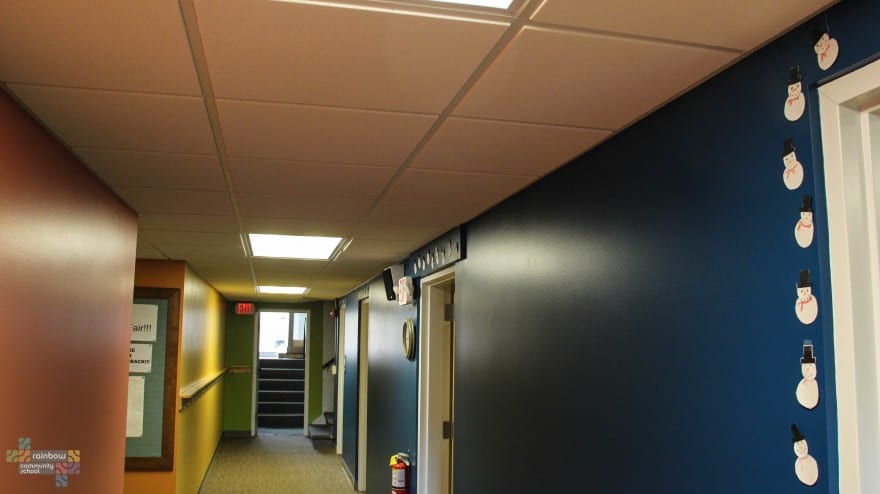 I was impressed with the courage to confront big issues in practical ways. For instance, climate change is a scary proposition but seeing the kids ready and eager to find solutions in immediate practical ways was inspiring. Equally so with issues of gender and animal safety and on down the list. – Billy Goodrum
I was impressed with the courage to confront big issues in practical ways. For instance, climate change is a scary proposition but seeing the kids ready and eager to find solutions in immediate practical ways was inspiring. Equally so with issues of gender and animal safety and on down the list. – Billy Goodrum
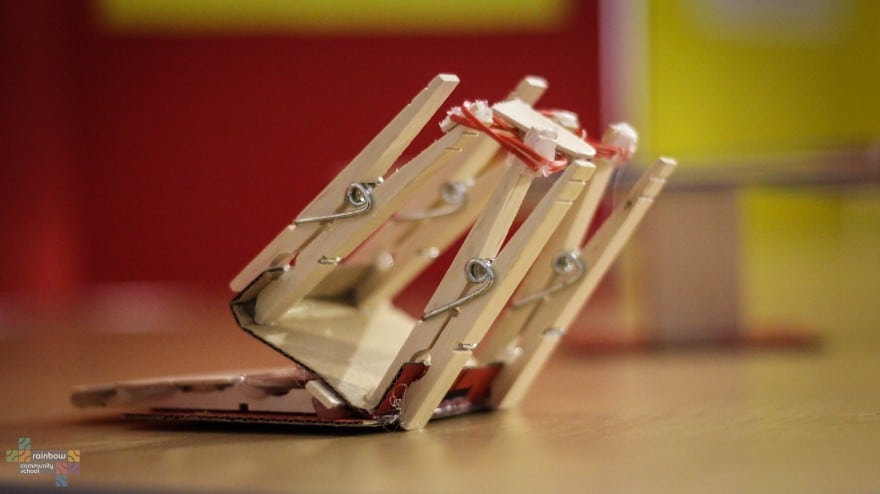 I could hear murmurings from guests as they left the room saying it is people like these students that will better our world. I felt inspired. I felt proud. I felt humbled. – Susan Waddel
I could hear murmurings from guests as they left the room saying it is people like these students that will better our world. I felt inspired. I felt proud. I felt humbled. – Susan Waddel
